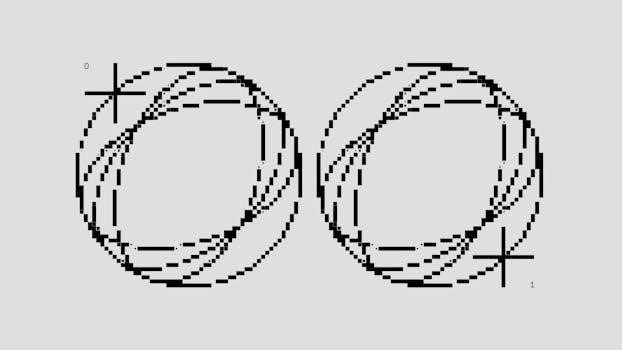IB Math SL⁚ Plotting Fraction Functions
In IB Math SL, fractional functions, often involving rational expressions, are a key area of study. This section delves into the process of plotting these functions, focusing on understanding how the numerator and denominator interact to shape the graph. These skills are vital for exam success, requiring careful analysis and practice.
Understanding Rational Functions in IB Math SL
Rational functions, a crucial component of the IB Math SL curriculum, are defined as the ratio of two polynomials. These functions often exhibit unique behaviors, such as asymptotes, which are lines the graph approaches but never touches. Understanding these behaviors is paramount for accurately plotting and interpreting rational function graphs. The exploration of rational functions in IB Math SL builds upon foundational concepts of functions, including domain, range, and transformations. Key skills involve identifying vertical and horizontal asymptotes, understanding the function’s behavior near these asymptotes, and recognizing special cases like the reciprocal function. Mastery of rational functions enables students to analyze more complex mathematical relationships and prepares them for future studies in calculus. The curriculum emphasizes practical applications of these functions and encourages students to develop their problem-solving skills through practice exercises and real-world examples. Furthermore, the ability to sketch and interpret rational function graphs is a critical skill assessed in examinations, underscoring the importance of in-depth understanding of their properties and behavior.

Key Components of Rational Functions
Rational functions, central to IB Math SL, are essentially ratios of polynomial expressions, often taking the form f(x) = P(x)/Q(x). Key components include the numerator, P(x), and the denominator, Q(x), both of which are polynomials. Understanding the degree and coefficients of these polynomials is crucial in analyzing the function’s behavior. Vertical asymptotes, a defining characteristic, occur where the denominator, Q(x), equals zero, rendering the function undefined. The behavior of the function near these asymptotes is a key aspect of graphing. Horizontal asymptotes, on the other hand, are determined by comparing the degrees of P(x) and Q(x), indicating the function’s long-run behavior. Intercepts, both x- and y-, provide additional anchor points for sketching the graph. Furthermore, holes can occur when both numerator and denominator share a common factor, leading to discontinuities. Identifying all these elements is crucial in accurately representing the rational function’s graph, which is essential for IB Math SL assessments. Practice with various examples is vital to reinforce understanding of these components and their impact on the overall function.
Finding Vertical Asymptotes
Identifying vertical asymptotes is a crucial step in sketching rational functions for IB Math SL. Vertical asymptotes occur where the denominator of the rational function, Q(x), equals zero. To find these asymptotes, set Q(x) = 0 and solve for x. The solutions to this equation represent the x-values where the function is undefined, resulting in vertical lines that the graph approaches but never crosses. It’s important to note that these asymptotes are not part of the graph itself, but rather they serve as guides to illustrate the function’s behavior near these x-values. For instance, if a rational function has a denominator of (x-a), the vertical asymptote will be at x=a. This process is fundamental to understanding the function’s domain and range, as well as how the graph behaves around the asymptotic lines. Careful analysis of the denominator, including any potential factorization, will uncover all vertical asymptotes associated with the function. This skill is essential for students to accurately sketch and understand rational functions in IB Math SL.
Sketching Rational Function Graphs

Sketching rational function graphs in IB Math SL requires a systematic approach. Begin by identifying and plotting the vertical asymptotes, which are found by setting the denominator equal to zero. Next, determine any horizontal or slant asymptotes, which dictate the function’s behavior at extreme x-values. Then, pinpoint the x and y-intercepts by setting y=0 and x=0, respectively. Plot additional points to gain a clear understanding of the graph’s shape, especially in areas between asymptotes and intercepts. Consider the function’s behavior around asymptotes; does it approach from above or below? Pay attention to any potential “holes” or discontinuities in the graph, which are typically caused by factors that cancel out in both the numerator and denominator. Use all these calculated points and the asymptotes as guidelines when drawing your graph. Remember, the graph will approach but not cross the asymptotes. Practice and familiarity with different rational function forms are key to mastering this skill in IB Math SL.

Practice Questions for IB Math SL
To solidify your understanding of plotting rational functions, it is crucial to engage with a variety of practice questions. A good starting point is to find questions that ask you to identify asymptotes and intercepts for a given rational function, then use these elements to sketch the graph. Look for problems that include both linear and quadratic expressions in the numerator and denominator, as well as more complex forms with potential holes. Try questions that challenge you to determine a function’s equation from a given graph. It’s also helpful to analyze functions with slant asymptotes. Solve questions without solutions first to test your understanding, then check your answers. Practice exam style questions can help you get used to the format and the level of challenge you will face in the IB Math SL exams. Regular and varied practice is essential to master plotting rational functions and achieving success in IB Math SL. This will help in recognizing patterns and common challenges.
Resources for Rational Functions
Several valuable resources can aid your study of rational functions in IB Math SL. Online platforms like Revision Village and IBMaths provide a plethora of practice questions and revision notes tailored to the IB curriculum. These resources often offer step-by-step solutions and video explanations which can be very helpful. Look for downloadable teaching materials, such as PDFs, that present concepts clearly and include various examples. YouTube channels dedicated to IB Math can offer visual explanations and demonstrations of sketching techniques for rational functions. Additionally, Save My Exams provides revision notes and questions written by experienced IB math teachers. It is very useful to find resources that align with the IB syllabus, specifically focusing on topic 2.5 for rational and reciprocal functions. Using a variety of these resources will ensure comprehensive and effective learning of the topic. Don’t forget to check forums and online communities for peer support and additional help.
Common Mistakes and How to Avoid Them
When dealing with rational functions, several common mistakes can hinder your progress. One frequent error is incorrectly identifying vertical asymptotes. Remember to set the denominator equal to zero and solve for x; any resulting x-values indicate the locations of these asymptotes. Another mistake involves incorrectly graphing the function’s behavior near asymptotes; the graph should approach but never cross them. Failing to factor the numerator and denominator can also lead to overlooking holes in the graph, which occur when factors cancel out. Furthermore, be cautious about incorrect domain and range identifications; always consider any restrictions. When sketching, make sure your graph is smooth and clearly shows the behavior of the function. Practice regularly, and always check your work to avoid any mistakes. It is very important to understand how all components of the function affect its graph. Reviewing model answers and understanding where errors might occur can help prevent them on assessments. Don’t forget to double check everything you do!

The Reciprocal Function as a Special Case
The reciprocal function, defined as f(x) = 1/x, represents a fundamental example of a rational function and serves as a crucial starting point for understanding more complex fractional functions. Its graph, a hyperbola with vertical and horizontal asymptotes at x=0 and y=0 respectively, illustrates key characteristics found in other rational functions; This basic case helps in visualizing how the denominator influences the function’s behavior, particularly as x approaches zero. Understanding the reciprocal function’s properties, such as its symmetry about the origin and the way it approaches its asymptotes, lays a solid foundation for analyzing more complex rational functions. For instance, transformations applied to the reciprocal function, like translations, reflections, and stretches, can create many variations. The reciprocal function illustrates the core principles of asymptotic behavior and how dividing by a variable affects a function’s shape. Recognizing this function is essential to successfully understanding rational functions.

